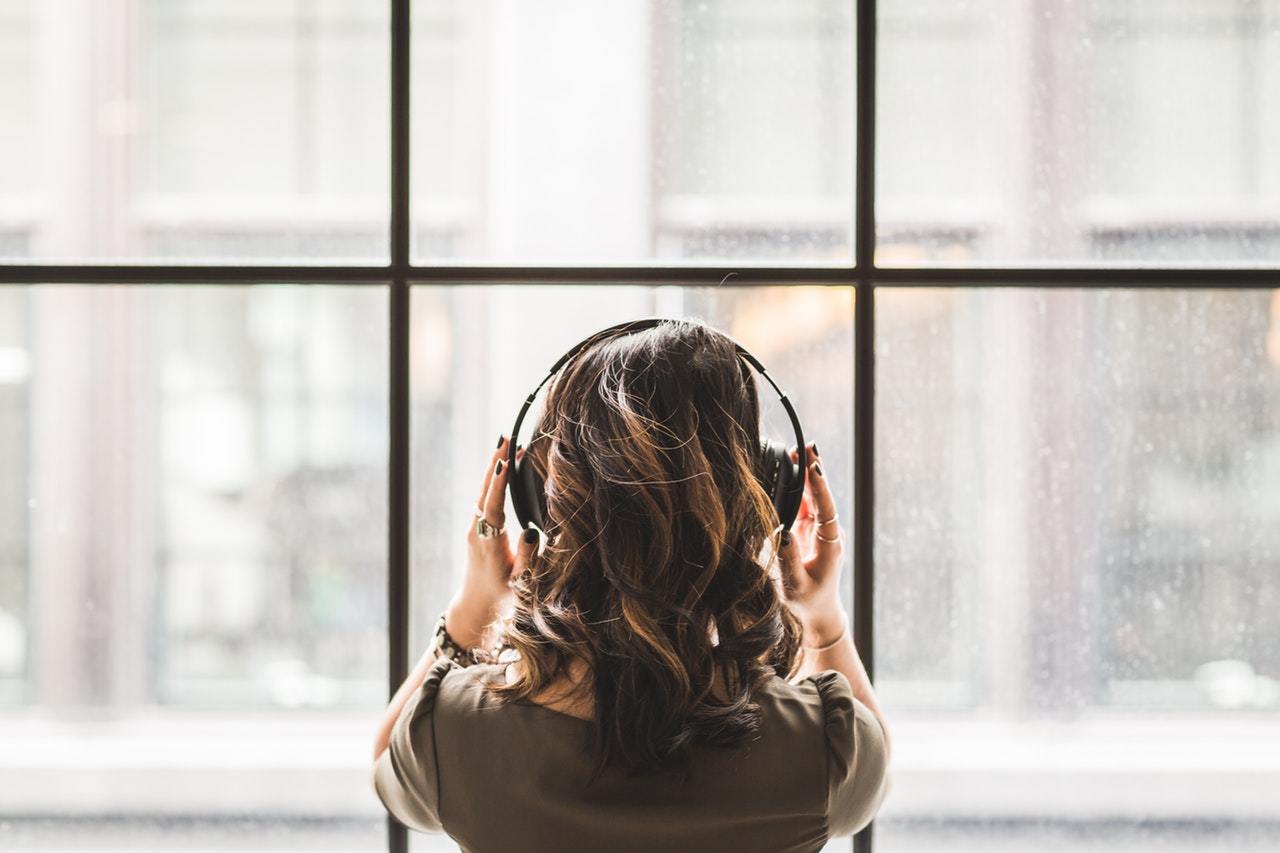In our hyper-connected, notification-driven world, sustained focus has become a rare and valuable commodity. Whether you’re a student grappling with complex assignments, a professional striving to meet demanding deadlines, or an individual simply seeking to engage in deep, uninterrupted work, the omnipresent distractions of modern life can be overwhelming. The constant pings of social media, the allure of a new email, or the background chatter of an open-plan office all conspire to fragment our attention, diminishing productivity and increasing stress.
However, what if there was a simple, accessible tool that could help you cut through the noise, quiet your mind, and unlock profound levels of concentration? This article delves into the transformative power of focus music apps—digital companions specifically designed to create an optimal auditory environment for enhanced productivity, creativity, and mental clarity. Far beyond mere background noise, these applications leverage scientific principles of sound and psychoacoustics to guide your brain into states conducive to deep work.
This comprehensive guide will explore the science behind focus music, detail the various types of apps available, provide practical tips for integrating them into your workflow, and highlight the profound benefits they offer. By the end of this article, you will have a clear understanding of how to harness the strategic use of sound to master your attention, achieve flow states, and dramatically elevate your capacity for focused work in any environment.
The Science of Sound and Focus

The idea that music can influence our mood and cognitive abilities is not new, but the development of focus music apps is rooted in specific scientific principles that explain how certain types of sound enhance concentration.
A. Brainwave Entrainment
Our brains produce electrical impulses, known as brainwaves, which fluctuate depending on our mental state. For instance, high-frequency beta waves are associated with alertness, while lower-frequency alpha and theta waves are linked to relaxation and deep focus. Focus music apps often employ techniques like binaural beats or isochronic tones, which are designed to “entrain” your brainwaves, gently guiding them towards a desired frequency (e.g., alpha or theta for concentration).
B. Masking Distractions
One of the most immediate benefits of focus music is its ability to mask distracting background noises. A sudden conversation, a ringing phone, or the rumble of traffic can easily pull you out of a focused state. By providing a consistent, non-intrusive auditory environment, focus music creates an “acoustic privacy” that allows your brain to concentrate on the task at hand.
C. Reducing Cognitive Load
Silence, paradoxically, can sometimes be distracting, as it leaves ample room for internal monologue, anxieties, and random thoughts to surface. The right kind of focus music provides a gentle, consistent external stimulus that occupies the part of your brain that might otherwise wander, thereby reducing cognitive load and freeing up mental resources for the primary task.
D. Emotional Regulation and Mood Enhancement
Specific musical compositions and ambient sounds can evoke positive emotions, reduce stress, and promote a sense of calm. When you are less stressed and in a more positive mood, your capacity for sustained focus and problem-solving naturally increases.
E. Predictability and Habit Formation
Consistent use of focus music can act as a powerful cue for your brain. Over time, your mind will associate specific sounds or playlists with states of deep work, making it easier to transition into a focused state simply by pressing play. This predictability aids in habit formation.
Types of Focus Music and App Features
Focus music apps offer a diverse range of auditory experiences, each tailored to different preferences and cognitive needs. Understanding these categories is key to finding your perfect focus companion.
A. Ambient Noise Generators
These apps provide a continuous, non-rhythmic sound that helps mask distractions without drawing attention to itself.
- A. Nature Sounds: Rain, ocean waves, forest ambiance, crackling fire. These sounds are universally calming and effective at masking distractions.
- B. White, Pink, and Brown Noise: These are static-like sounds with different frequency distributions. White noise masks a wide range of frequencies, pink noise is deeper (like steady rain), and brown noise is even deeper (like a strong waterfall). They are excellent for creating a consistent auditory backdrop.
- C. Cafe/Office Ambiance: For those who thrive in a lightly bustling environment, these apps replicate the low hum of a coffee shop or a busy office, providing gentle, non-intrusive human chatter.
B. Binaural Beats and Isochronic Tones
These are specialized audio tracks designed for brainwave entrainment.
- A. Binaural Beats: Occur when two slightly different frequency tones are played into each ear simultaneously. Your brain perceives a “beat” at the difference frequency, which can gently guide brainwave activity. (Requires headphones).
- B. Isochronic Tones: Are single tones that turn rapidly on and off, creating a pulsing effect. They are effective for brainwave entrainment and do not require headphones.
C. Instrumental Music with Specific Compositions
Many apps feature instrumental music carefully composed to enhance focus.
- A. Classical Music (Baroque): Composers like Bach and Vivaldi are often cited for their rhythmic patterns and frequencies that resonate with optimal learning states.
- B. Lo-Fi Hip-Hop: Known for its relaxed tempos, gentle beats, and absence of distracting lyrics, lo-fi music has become a popular choice for studying and focused work.
- C. Cinematic/Soundtrack Music: Often designed to evoke emotion without being overly distracting, these can provide an epic backdrop to your work.
- D. Electronic/Ambient Soundscapes: Non-lyrical electronic music with evolving textures and minimal melodic distraction.
D. Intelligent and Adaptive Music Generators
Some advanced apps use AI to generate music that adapts to your mental state or work environment, offering a personalized focus experience.
Top Focus Music Apps and Key Features

The market is rich with excellent focus music apps, each with its unique strengths. Here are some popular choices and the features to look for:
A. Brain.fm
- Key Feature: Uses patented AI-generated functional music designed for specific brain states (focus, relax, sleep). Scientifically backed and highly effective for many users.
- Why it’s great: No distracting melodies, just carefully crafted audio that guides your brain.
B. Endel
- Key Feature: Creates personalized, AI-generated soundscapes that adapt to your immediate state, location, time of day, and even heart rate (via integrations).
- Why it’s great: Highly adaptive and personal, providing a truly unique auditory experience.
C. Noisli
- Key Feature: A versatile ambient noise generator with a wide array of sounds (rain, fire, forest, coffee shop, white noise, etc.) that you can mix and match to create your perfect soundscape.
- Why it’s great: Excellent for customization and masking distractions. Minimalist interface.
D. Focus@Will
- Key Feature: Offers various channels of scientifically optimized instrumental music (classical, cinematic, ambient, alpha-wave, etc.) designed to increase attention span and reduce distractions. Includes a productivity tracker.
- Why it’s great: Wide selection of scientifically curated music channels.
E. Tide
- Key Feature: Combines nature sounds, focus music, and a Pomodoro timer. It’s a holistic app for focus, meditation, and sleep.
- Why it’s great: Integrates focus music with a popular productivity technique.
F. Generative.fm
- Key Feature: Provides continuously playing, non-repeating ambient soundscapes. The music is generated algorithmically, ensuring it never sounds the same.
- Why it’s great: Infinite unique compositions, perfect for long focus sessions without repetition.
G. YouTube/Spotify Playlists
- Key Feature: Access to a massive library of user-curated playlists (e.g., “Lo-Fi Hip-Hop for Study,” “Deep Focus Ambient,” “Classical Study Music”).
- Why it’s great: Free and highly diverse, but lacks the scientific optimization of dedicated apps. Look for channels like “ChilledCow” or “LoFi Girl.”
H. Simple Sound Apps
- Many simple apps offer individual ambient sounds like “Rain Sounds,” “Ocean Waves,” or “White Noise Generator.”
- Why it’s great: Basic, free, and effective for simple masking.
Integrating Focus Music into Your Workflow
To maximize the benefits of focus music apps, consider these practical integration strategies.
A. Establish a Consistent “Focus Ritual”
Associate specific music with deep work. When you’re ready to focus, put on your headphones, open your chosen app, and press play. Over time, this ritual will signal to your brain that it’s time to concentrate.
B. Experiment to Find Your Ideal Soundscape
What works for one person might not work for another. Experiment with different types of sounds (nature, white noise, binaural beats, instrumental music) and different apps. Pay attention to how each soundscape affects your focus and mood.
C. Use Headphones for Optimal Results
Headphones, especially noise-canceling ones, significantly enhance the effectiveness of focus music by isolating you from external distractions and delivering the sound directly to your ears (crucial for binaural beats).
D. Avoid Music with Lyrics
For most people, music with lyrics engages the language processing centers of the brain, leading to distraction. Stick to instrumental, ambient, or noise-based soundscapes for optimal focus.
E. Combine with Productivity Techniques
Pair your focus music app with proven productivity techniques like the Pomodoro Technique (25 minutes of focused work, 5-minute break) or time-blocking. The music can help you sustain focus during the work intervals.
F. Adjust Volume Levels
The ideal volume level for focus music is typically low to moderate. It should be present enough to mask distractions but not so loud that it becomes a distraction itself.
G. Pre-load for Offline Use
If you work in areas with unreliable internet, download your preferred focus tracks or ensure your app has offline functionality to maintain your focus ritual uninterrupted.
Conclusion
In an era defined by relentless digital noise and fragmented attention, the ability to cultivate and sustain deep focus is not merely a desirable trait, but a critical skill for personal and professional success. Focus music apps emerge as powerful allies in this endeavor, transforming chaotic auditory environments into sanctuaries of concentration. They are not a magic bullet, but rather sophisticated tools grounded in psychoacoustic science, designed to gently guide our brains into states conducive to productivity, creativity, and profound engagement with our work.
By understanding the science of brainwave entrainment, distraction masking, and emotional regulation, we can appreciate the nuanced effectiveness of these applications. From the soothing consistency of ambient noise generators to the precise brainwave guidance of binaural beats, and the artful composition of instrumental music, there is a diverse soundscape tailored to virtually every preference and cognitive need. Integrating these tools strategically into a “focus ritual,” experimenting to find your optimal auditory environment, and combining them with established productivity techniques allows you to move beyond merely coping with distractions to actively orchestrating your cognitive performance.
The benefits extend far beyond simply getting more done. By leveraging focus music apps, you reclaim ownership of your attention, reduce mental clutter, alleviate stress, and foster a deeper sense of calm and control over your workday. You unlock the capacity for “deep work”—the focused, uninterrupted effort that leads to genuine innovation and high-quality output. Ultimately, embracing focus music apps is an investment in your mental well-being, your productivity, and your ability to navigate the complexities of modern life with greater clarity and effectiveness. It’s about empowering yourself to not just hear the world, but to truly listen to the sound of your own focused achievement.












